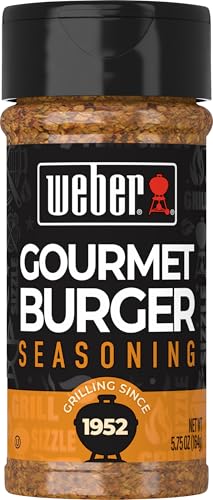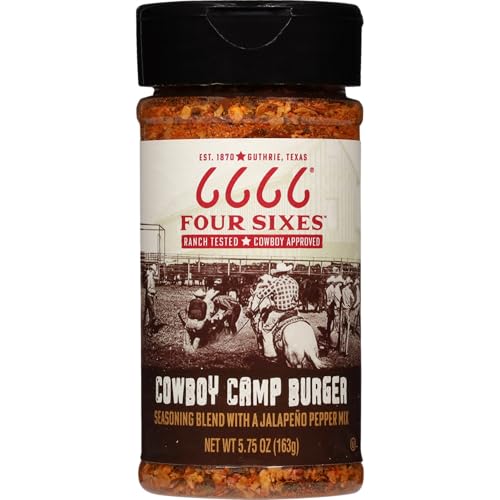Key Takeaways
- Understanding Burger Fat: Grease and fat are crucial for achieving the flavor and juiciness of burgers, with a standard beef patty containing about 20% fat for moisture retention.
- Types of Fats: Different fats contribute to the burger experience: saturated fats enhance flavor, monounsaturated fats support heart health, polyunsaturated fats offer essential nutrients, while trans fats should be avoided.
- Balancing Health and Flavor: While burger grease enhances taste, it can raise caloric counts. Striking a balance involves incorporating fresh vegetables and lean proteins to create delicious yet health-conscious burgers.
- Debunking Myths: Common misconceptions include the belief that all saturated fats are harmful and that frying is the best cooking method. Grilling can produce flavorful burgers while allowing excess grease to render off.
- Smart Eating Practices: Opt for lean cuts, experiment with healthier toppings, and consider alternatives like avocado or grilled vegetables to enhance both taste and nutritional value in burgers.
When I think about burgers, my mouth waters at the thought of juicy patties and melted cheese. But lurking beneath that delicious exterior is a topic that often gets a bad rap: burger grease and fat. We’ve all heard the warnings about greasy foods, but how much do we really know about what’s in our favorite comfort food?
The Truth About Burger Grease and Fat
Grease and fat are integral parts of the burger experience. They contribute to that mouthwatering flavor and juicy texture many of us crave. While some may see grease as a villain, I appreciate it as part of what makes a burger truly delicious.
Fat content in beef plays a significant role in taste. A standard beef patty contains about 20% fat, which aids in moisture retention. This is crucial when grilling since even the hottest fire won’t dry out a well-fat-marinated patty. If I opt for leaner cuts, I often add ingredients like bacon or cheese to amp up the flavor and juiciness.
Another aspect of burger grease is the searing effect it has when cooking. That sizzling sound signals the Maillard reaction, leading to those delightful charred flavors. It’s essential to get a balance; too much grease makes the burger heavy, while too little can result in a dry bite.
Different burger styles also factor in grease levels. For instance, a classic cheeseburger with cheddar brings both taste and fat, while a turkey burger may need a boost from mayonnaise or avocado to ensure it remains juicy.
Grease is also a surface topic worth discussing. Toppings, sauces, and cooking methods can influence fat content. For example, frying a burger in oil adds extra fat, while grilling can allow some grease to render off. Understanding these elements helps in crafting unique burgers that don’t skimp on flavor while keeping health considerations in mind.
Ultimately, burger grease and fat aren’t merely something to fear; they’re essential components that add depth and character to each bite. With the right understanding, I can create delicious, innovative burgers that my friends and family adore, without sacrificing taste or quality.
Nutritional Composition of Burger Grease
Understanding the nutritional composition of burger grease illuminates its role in crafting amazing, unique burgers. Grease adds flavor and moisture while providing essential context for balancing taste and health.
Types of Fats in Burgers
Different types of fats come into play when creating a juicy burger.
- Saturated fat: Found in beef, this fat contributes to the rich flavor and texture many love. It solidifies at room temperature and plays a role in cardiometabolic health.
- Monounsaturated fat: Present in higher-fat beef cuts and toppings like avocado, these fats promote heart health while enhancing flavor without overwhelming the palate.
- Polyunsaturated fat: Mostly coming from added oils or toppings, such as mayonnaise or certain cheeses, these fats contain essential fatty acids. They offer a lighter touch in combination with other flavors.
- Trans fat: Often found in processed ingredients or cooked oils, avoiding these is essential for optimal health. I always recommend sticking with fresh, high-quality ingredients.
Each type of fat contributes a different aspect to the burger experience, amplifying flavors and textures.
Caloric Density of Burger Grease
The caloric density of burger grease affects how I create my mouthwatering recipes. According to USDA data, one ounce of rendered beef fat contains approximately 250 calories.
| Type of Fat | Calories per Ounce |
|---|---|
| Rendered beef fat | 250 |
| Bacon fat | 320 |
| Cheese fat | 110 |
Grease enhances taste but can significantly increase calorie counts, especially with additional ingredients. When designing burgers, I strive for a balance—allowing grease to elevate flavors while incorporating fresh vegetables and lean proteins. This way, I create burgers that satisfy while being mindful of nutritional aspects.
Health Implications of Consuming Burger Grease
Exploring the health implications of burger grease adds depth to my passion for crafting unique burgers. While grease amplifies flavor and keeps burgers juicy, it’s important to understand its effects on our bodies.
Short-term Effects on Digestion
Consuming greasy burgers can lead to immediate digestive issues like bloating or discomfort, especially if the meal is rich in fat. High-fat foods tend to slow down digestion, which may leave you feeling sluggish post-meal. Discomfort often arises from a combination of fat and fiber if the burger lacks fresh vegetables or toppings that aid in digestion. Balancing grease with lighter ingredients, such as lettuce, tomatoes, or pickles, can help mitigate these effects and keep the flavor intact.
Long-term Health Risks
Long-term consumption of excessive grease and fats has potential health risks. Diets high in saturated fats can contribute to heart disease and elevated cholesterol levels. Trans fats, commonly found in some processed burger ingredients, pose significant health hazards too. Research indicates that diets high in unhealthy fats can lead to weight gain and increased risk of chronic diseases. I strive to incorporate lean proteins, whole grains, and fresh produce into my burger creations to balance taste and health, ensuring that indulging in my burgers doesn’t come at the expense of well-being. As I continue to innovate in the kitchen, I’m mindful of both flavor and health, crafting burgers that excite tastebuds while promoting nutrition.
Common Myths About Burger Grease
Understanding grease in burgers includes debunking common myths that often mislead aspiring burger enthusiasts. Let’s clear up some misconceptions about burger grease and fat.
Misconceptions About Saturated Fats
Many people think saturated fats are inherently bad. They believe that any amount of saturated fat in a burger leads to health issues like heart disease. However, moderate consumption of saturated fat can be part of a balanced diet. For example, the fat in beef provides flavor, moisture, and satisfaction. I find that using cuts with around 20% fat ensures each burger is juicy while still allowing room for creativity and customization. Embracing the right balance of fat, including properly sourced saturated fats, can enhance both taste and texture without compromising health.
Myths on Cooking Techniques
Another common myth is that frying is the only way to create a delicious burger. Many folks believe grilling produces dry and flavorless patties. In reality, grilling often allows excess grease to render off, resulting in a better flavor profile. Grilling creates that satisfying char with the Maillard reaction, transforming natural sugars and amino acids into complex flavors. When you grill burgers, keeping the temperature right ensures moisture remains inside while allowing the fat to do its magic, leading to an explosion of flavor in each bite. Multiple cooking methods can enhance my burgers, so I’ve enjoyed experimenting with everything from stovetop searing to smoking to discover new taste sensations. Each technique brings unique attributes to the burger experience that satisfy diverse palates.
Best Practices for Enjoying Burgers Healthily
I love crafting unique burgers, and part of that joy comes from making smarter choices. Here are some best practices to enhance both flavor and health.
Choosing Leaner Cuts of Meat
Choosing leaner cuts of meat sets a solid foundation for a healthy burger. Ground turkey or chicken offers a lighter alternative without sacrificing taste. I’ve experimented with grass-fed beef that has less fat yet retains rich flavor. For exciting variations, consider blends like brisket and chuck or bison, which pack great flavor while being leaner. Always opt for freshly ground meat for the best texture and taste.
Alternatives to Traditional Burger Toppings
Swapping traditional toppings for healthier options adds freshness and flavor. I love using avocado slices or guacamole instead of creamy dressings. They provide healthy fats and richness. Incorporating grilled vegetables, like zucchini or bell peppers, brings a smoky depth. For crunch, swap classic lettuce for arugula or spinach, offering more nutrients and a peppery bite. Experiment with tangy options, like kimchi or pickled onions, to elevate your burger to new flavor heights.
Conclusion
Burger grease and fat might seem intimidating at first but they play a vital role in creating those mouthwatering flavors we love. It’s all about balance. By choosing quality ingredients and experimenting with cooking methods I can enjoy a delicious burger without sacrificing my health.
I’ve found that incorporating fresh veggies and lean proteins can elevate my burger experience while keeping it nutritious. So the next time I indulge in a juicy burger I’ll remember that a little grease is part of what makes it so satisfying. Here’s to enjoying burgers mindfully and savoring every bite!





